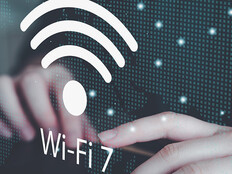For Healthcare Organizations, Technology Deployments Make Both Dollars and Sense
Technology adoption, without a doubt, is key to the evolution and improvement of patient care.
For instance, a majority of hospitals have deployed an electronic health record system, according to the Office of the National Coordinator for Health IT. And to streamline care and improve patient satisfaction, many organizations, such as Danville, Pa.-based Geisinger Health System and New Orleans-based Ochsner Health System, turn to innovative tools that include mobile devices and patient apps.
But when implemented correctly, technology can also mean the difference between thousands, or even millions, of dollars saved for providers.
SIGN UP: Get more news from the HealthTech newsletter in your inbox every two weeks
Care Pathways Prove to Be a Financial Boon
Take St. Louis-based health system Mercy. In fiscal 2016, for instance, it saved $14 million by using data analytics tools to develop digital care pathways based on clinical benchmarks. The pathways help managers limit variation in best practices and have led to decreases in patients’ length of stay. Not surprisingly, Mercy was recognized with the 2016 HIMSS Davies Award — well-deserved for its achievements.
At Saint Peter’s Healthcare System in New Brunswick, N.J., implementation of single sign-on technology has helped drastically slash software licensing costs and concurrent logins. CIO Frank DiSanzo says the deployment saves his organization $150,000 annually. Efficiency at its best.
Meanwhile, a report published in November on behalf of the Centers for Medicare & Medicaid Services highlights some other successes for providers. It points to Atlanta’s Emory Healthcare, which launched an electronic intensive care unit (eICU) program in 2014. Intensivists and critical care nurses who staff the unit monitor patients at affiliated medical centers 24 hours a day through telemetry.
The monitoring has helped to flag problems that otherwise may have gone unnoticed. Between April 2014 and June 2015, it saved the health system $4.6 million, or $1,486 per eICU patient.
Keeping an Eye on the Triple Aim
Another report I read recently details the potential of technology’s use in healthcare from a broader perspective. Of 77 providers surveyed, 73 percent said the use of remote patient monitoring tools resulted in moderate to extensive operational cost savings. And 76 percent of provider respondents said medical cost savings from the use of such tools also were moderate to extensive.
Cost savings, of course, represent a third of the Institute for Healthcare Improvement’s Triple Aim, a set of goals the U.S. healthcare industry recognizes as a pathway toward improvement; the other goals include boosting the care experience and the health of populations.
More than ever before, it seems, technology’s role in achieving all three must not be overlooked.
This article is part of HealthTech’s MonITor blog series. Please join the discussion on Twitter by using #WellnessIT.










